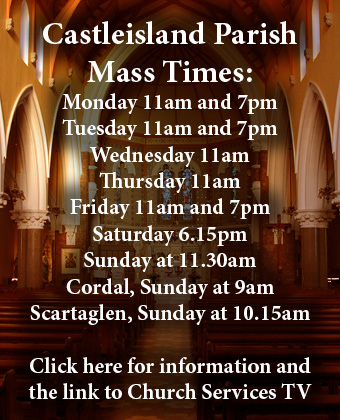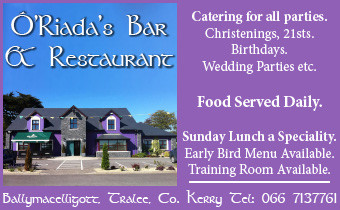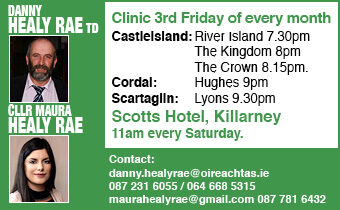

St. Patrick’s Day still has the edge over St. Brigid’s Day in terms of how it’s celebrated.
But it’s wonderful to see how much more of an impact our female patron saint is making these days.
Schools and historical societies are making St. Brigid’s Crosses all over the country and maybe abroad and some are educating coming generations by holding classes in the ancient art.
God be with the late Moss Curtin. Himself and myself often set off for Leane’s fields on cold January evenings, with dusk as a cover, armed with blunt butcher’s knives to harvest the rushes for what later became St. Brigid’s Crosses.
Unwritten Laws of the Countryside
I suppose it was some kind of an application of the unwritten laws of the countryside, but I would be sent up to Leane’s with a three pronged pike at hay time. I also helped Denis Leane during farming down time with the draining of the fields. This entailed little more than cleaning out dykes of dead leaves and silt and trimming briars with a hook. Whatever water the winter sent then could flow away back to the river without hindrance. In my innocence I hoped that our drainage work would kill all the rushes – but St. Brigid and nature prevailed.
Making St. Brigid’s Crosses
After Moss and myself had our quota of rushes – two bags full – we put them through a selection and drying process around, in, over and under the kitchen range in Knocknagore. The following days would be spent making the crosses, tying the ends of the arms at a measured distance from the centre and preparing the wooden backdrops.
The backdrop was then attached to a dowel and that to a base cross-cut from branches which had fallen from trees – also borrowed from Leane’s.
There was varnishing, and the name of the town or village they were destined for, still to be done.
Hand Cart with Solid Wheels
Then they were wrapped in newspapers and packed in tea chests and Moss and I would load them onto a hand cart with solid wheels and lug them in along Tralee Road to the railway station. You could say we created our own ‘rush’ hour’ with our cargo.
I used to dream of a cart with pumped wheels like the one they had at the Post Office at the time.
We never did anything of the like for poor old St. Patrick but I do remember collecting shamrock along the railway track – where it grew in abundance – which my parents dipped in some kind of glycerin preservative and packed and sent them to relatives in America.
Spare Rushes – No Waste
Spare rushes from the pre-St. Brigid’s Day activity were kept and tied in small bundles and used in the run-up to the following Christmas crib making ‘rush’ – with a bit of topping up from Leane’s fields and ditches.
I don’t think I’ve ever been without a St. Brigid’s Cross since and the current one, which is beside our front door, was made from rushes cut, years ago, from one of Jackie Dan Jerry O’Connor’s fields in Mullaghmarkey.
For the day that’s in it: Happy St. Brigid’s Day to all and it’s a good sign of us as a nation that we’re taking more notice and actively honouring and remembering a woman who was, by all accounts, remarkable.
 You can contact The Maine Valley Post on… Anyone in The Maine Valley Post catchment area who would like to send us news and captioned photographs for inclusion can send them to: jreidy@mainevalleypost.com Queries about advertising and any other matters regarding The Maine Valley Post can also be sent to that address or just ring: 087 23 59 467.
You can contact The Maine Valley Post on… Anyone in The Maine Valley Post catchment area who would like to send us news and captioned photographs for inclusion can send them to: jreidy@mainevalleypost.com Queries about advertising and any other matters regarding The Maine Valley Post can also be sent to that address or just ring: 087 23 59 467.















































